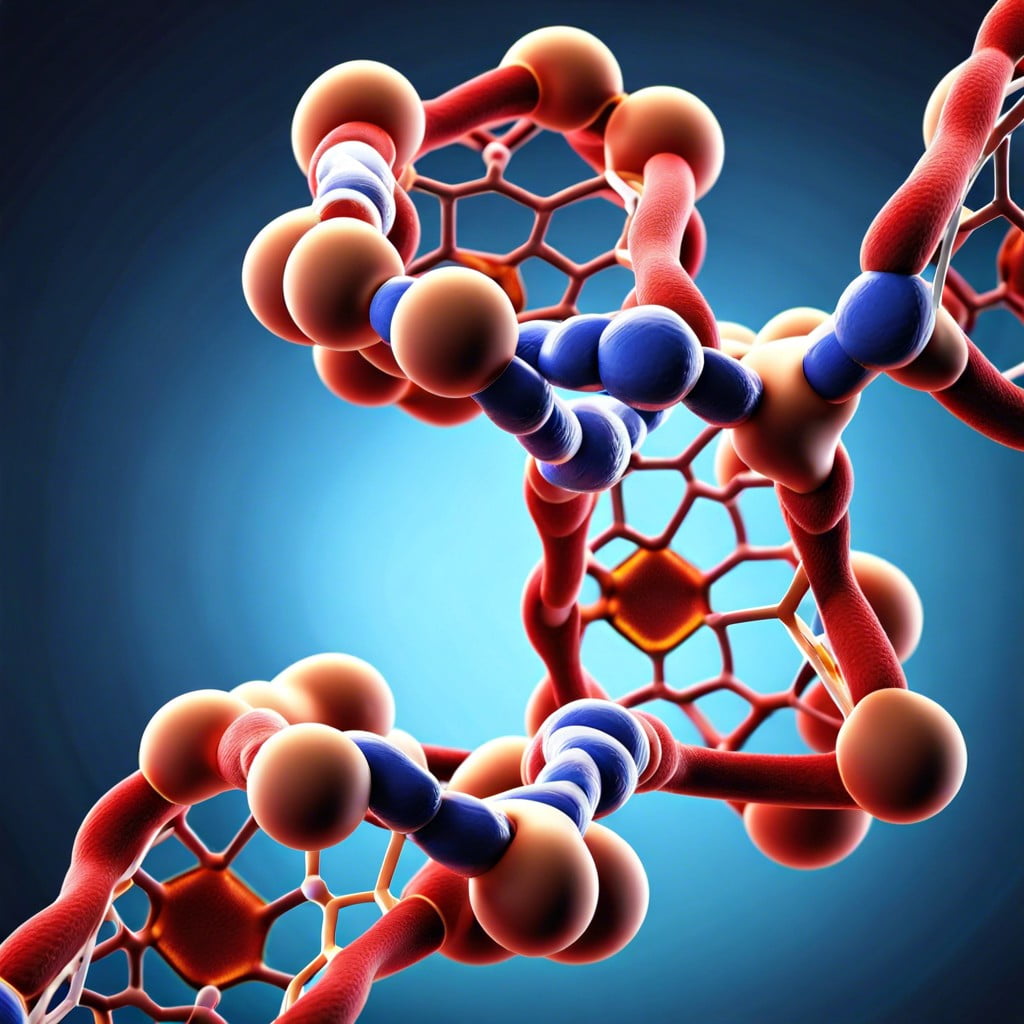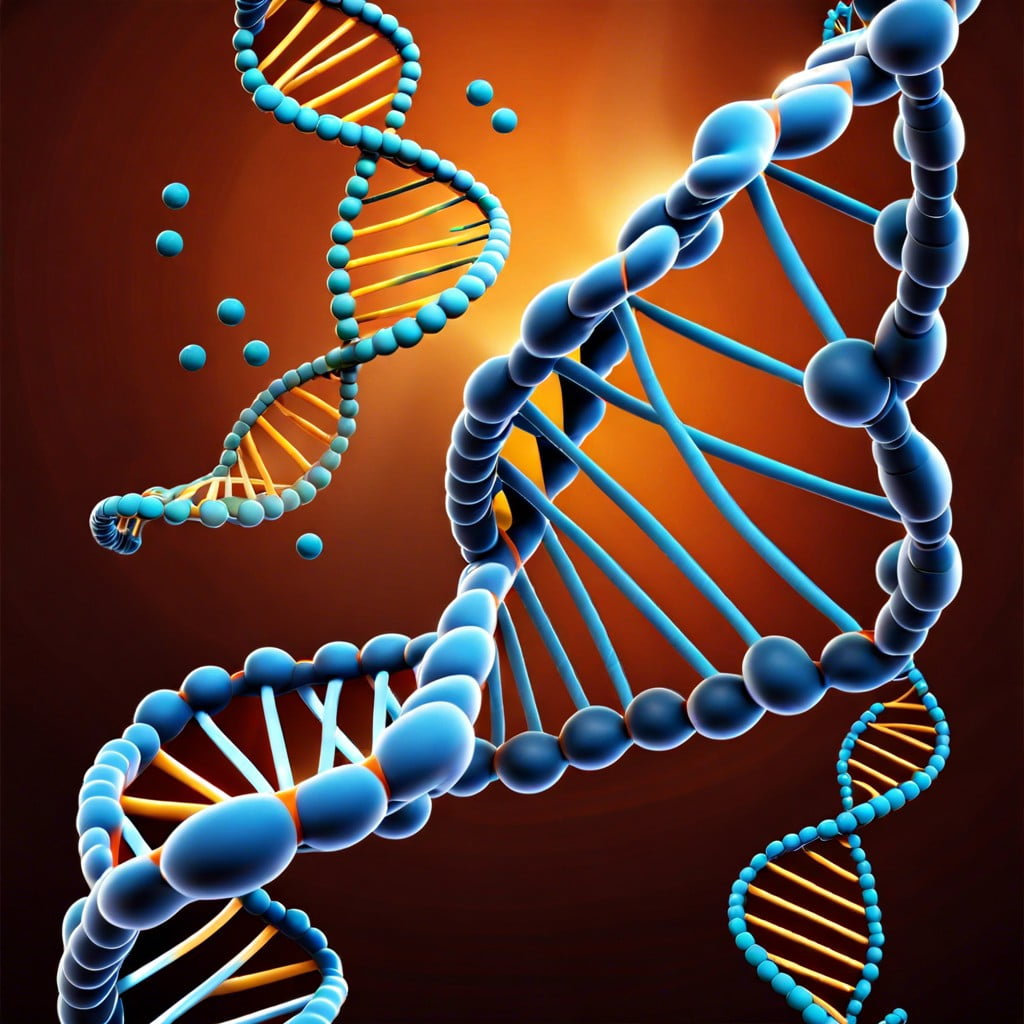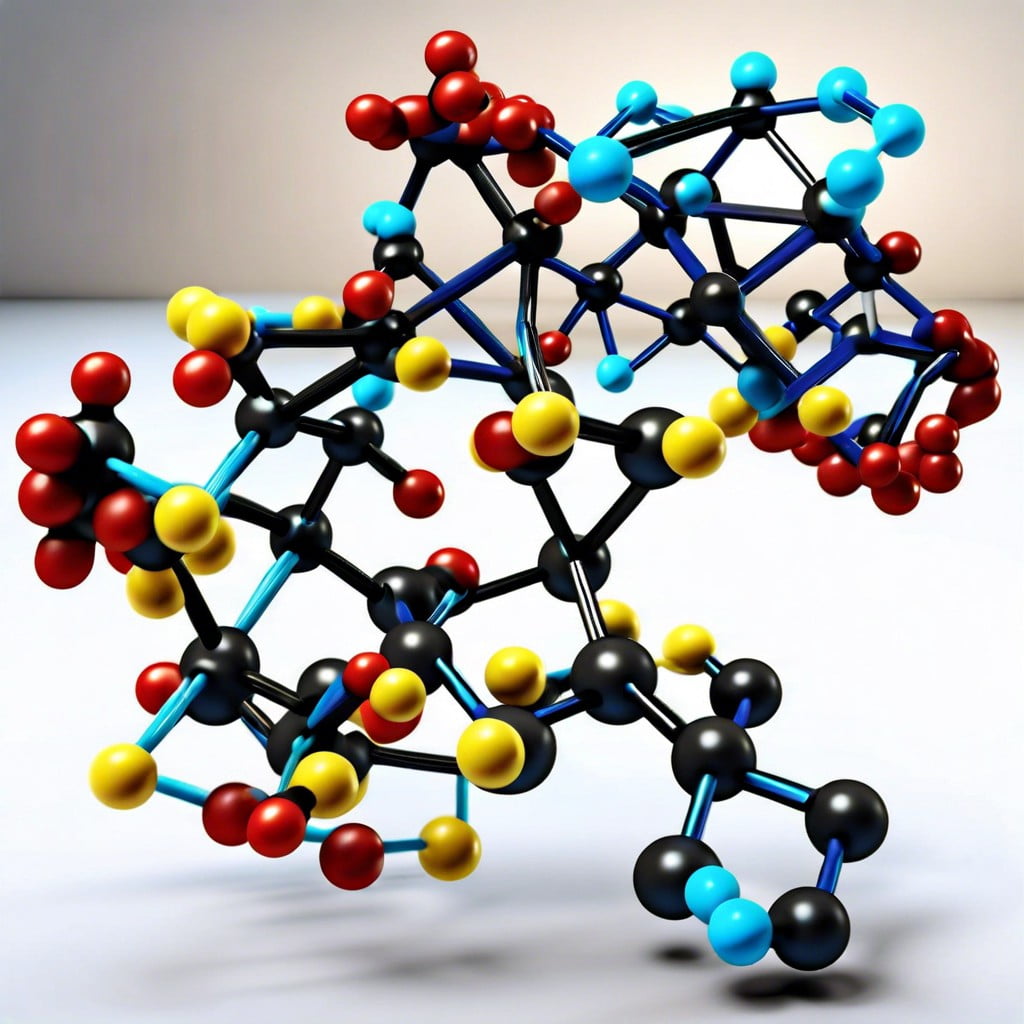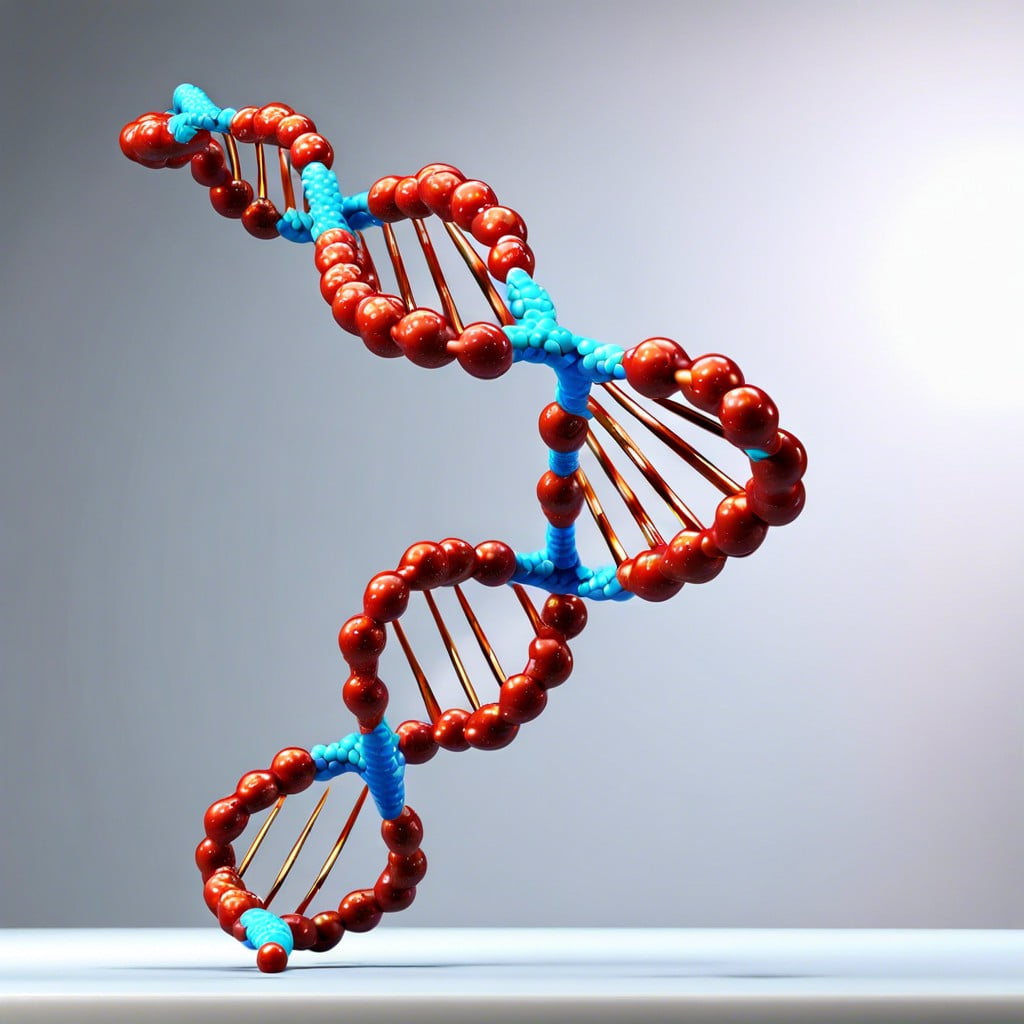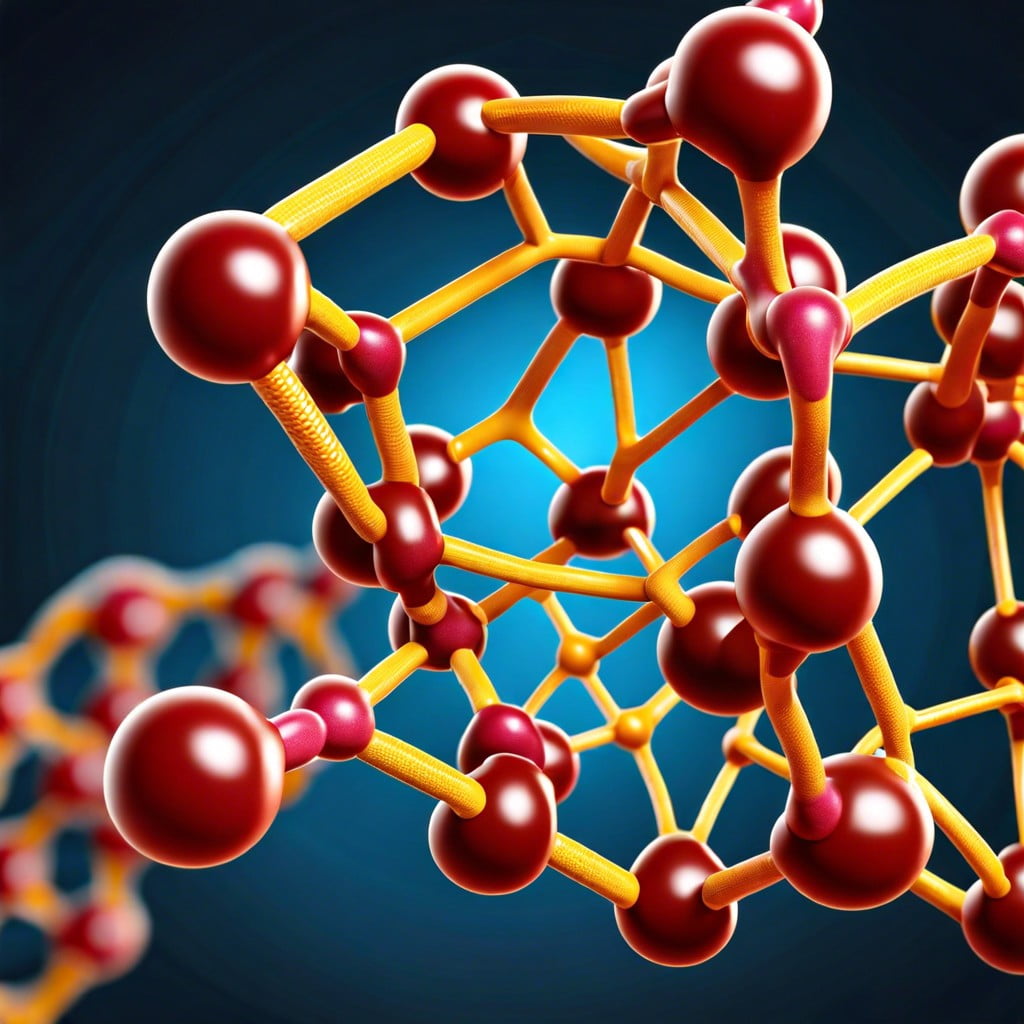This article provides a simple guide to understanding the polymer of nucleic acids and their role in the biological structure.
Key takeaways:
- Nucleic acids store and transfer genetic information.
- DNA and RNA are the two main types.
- DNA is a double-stranded molecule, while RNA is usually single-stranded.
- Nucleic acids have a unique structure with a sugar-phosphate backbone and nitrogenous bases.
- Nucleic acids perform vital functions like protein synthesis and hereditary information transfer.
What You Will Learn
Definition of Nucleic Acids
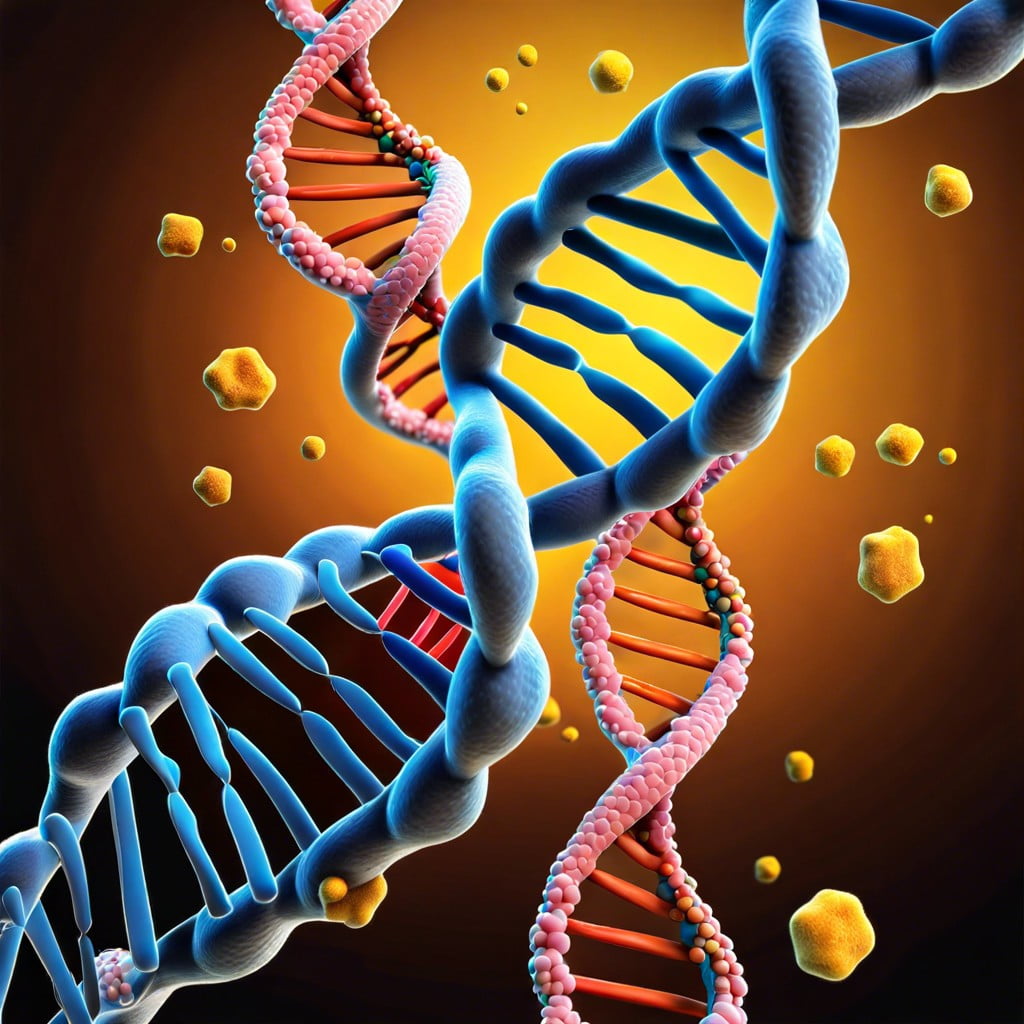
Nucleic acids are vital biological molecules found in all living cells. Their primary function is to store and transfer genetic information essential for life processes. There are two main types of nucleic acids:
- Deoxyribonucleic Acid (DNA): DNA is the molecule that holds the instructions for the growth, development, function, and reproduction of all known organisms and many viruses.
- Ribonucleic Acid (RNA): RNA is crucial in various biological roles, including coding, decoding, regulation, and expression of genes.
Both DNA and RNA are made up of monomers known as nucleotides, which consist of a sugar, a phosphate group, and a nitrogenous base. The sequence of these nucleotides encodes biological information. Nucleic acids exhibit a unique structure characterized by their long-chain formation, enabling them to perform their genetic roles effectively.
Formation of Nucleic Acid Polymers
Nucleic acid polymers are large, complex molecules formed through the linkage of nucleotide monomers. Each nucleotide consists of three components: a phosphate group, a sugar molecule (deoxyribose in DNA and ribose in RNA), and a nitrogenous base.
These nucleotides connect in a specific sequence to form a chain through dehydration synthesis reactions. During this process, the phosphate group of one nucleotide attaches to the sugar of the next, creating a backbone with alternating sugar and phosphate groups. The nitrogenous bases, adenine, thymine (in DNA), uracil (in RNA), cytosine, and guanine, extend from this sugar-phosphate backbone like the steps of a ladder.
The sequence of these bases constitutes the genetic code, which is unique to each organism and guides the synthesis of proteins. In DNA, these long chains twist to form a double helix, while RNA often exists as a single strand.
By forming these chains, nucleic acid polymers can store and transmit hereditary information, a vital process for cellular function and the continuity of life.
Function of Nucleic Acid Polymers
Nucleic acid polymers are vital for multiple cellular processes. Here are a few key functions they perform:
- Genetic Blueprint Storage: They hold the instructions needed to build and maintain living organisms, much like a blueprint outlines the design of a building.
- Protein Synthesis: By directing the order in which amino acids are assembled, they ensure the correct formation of proteins, which are essential for numerous bodily functions.
- Cell Division Regulation: During cell division, they ensure that genetic information is accurately replicated and passed on to new cells, maintaining the integrity of life.
- Hereditary Information Transfer: They carry genetic traits from parents to offspring, allowing for hereditary characteristics to be preserved across generations.
- Catalytic Activities: Some nucleic acid polymers such as ribozymes can act as enzymes, catalyzing biochemical reactions without the need for proteins.
Types of Nucleic Acids: DNA and RNA
DNA, or deoxyribonucleic acid, is a double-stranded molecule that carries the genetic blueprint of most living organisms. Its structure consists of two long chains coiled into a famous double helix. The strands are connected by pairs of four types of nitrogenous bases: adenine (A), thymine (T), cytosine (C), and guanine (G). In DNA, adenine pairs with thymine and cytosine with guanine.
RNA, short for ribonucleic acid, is usually a single-stranded polymer and acts as a messenger, transmitting instructions from DNA for controlling the synthesis of proteins. Unlike DNA, RNA has uracil (U) instead of thymine, which pairs with adenine. RNA is more versatile than DNA, performing various roles in the cell, such as catalyzing biological reactions, controlling gene expression, and acting as a structural scaffold in some cellular entities.
Both DNA and RNA are critical for the proper functioning of cells: DNA stores and transmits genetic information, while RNA translates this information into proteins essential for life.
Role of Nucleic Acids in Genetic Information Storage and Transfer
Nucleic acids serve as life’s meticulous librarians, safeguarding vital genetic blueprints. Through DNA, each cell holds a complete set of instructions for building an organism. This code is precise, with sequences of nucleotides dictating everything from eye color to disease predisposition.
The storage comes in the form of genes. These units of heredity, strung along the DNA’s double helix, await activation to express specific traits. When a cell needs to perform a function, DNA is transcribed into RNA, essentially creating a working copy of the instruction manual.
RNA then takes on the role of a courier. It transports the genetic messages from the nucleus, where DNA resides, to the cellular machinery that synthesizes proteins. In essence, RNA translates the genetic code into tangible structures and functions, orchestrating life’s diverse array of biological activities.
Genetic information transfer isn’t just internal; it’s generational. During reproduction, DNA ensures that every new cell inherits the instructions needed to thrive, passing traits from one generation to the next, continuing the cycle of life.
FAQ
What is the polymer of the nucleotide?
The polymer of the nucleotide is known as Ribonucleic acid (RNA) and Deoxyribonucleic acid (DNA).
What is the polymer of a nucleic acid quizlet?
The polymer of a nucleic acid is a long chain of nucleotide monomers that consist of a sugar, a phosphate group, and a nitrogenous base.
What is the polymer in DNA?
The polymer in DNA is a chain of nucleotides.
What are nucleic acids made of?
Nucleic acids are composed of nitrogen-containing bases, phosphate groups, and sugar molecules.
How do polymers play a role in RNA structure?
Polymers, specifically nucleic acid polymers, form the backbone of RNA structure, which is made up of a long chain of nucleotide units bonded together.
What is the relationship between polypeptides and nucleic acids?
Polypeptides are chains of amino acids that are synthesized based on the information encoded in nucleic acids.
How do nucleic acid polymers contribute to biological diversity?
Nucleic acid polymers, comprising DNA and RNA, contribute to biological diversity by storing and transmitting genetic information that governs the different characteristics of organisms.
Related reading:
